
CONTENTS
Junji Ito Exhibition: Enchantment
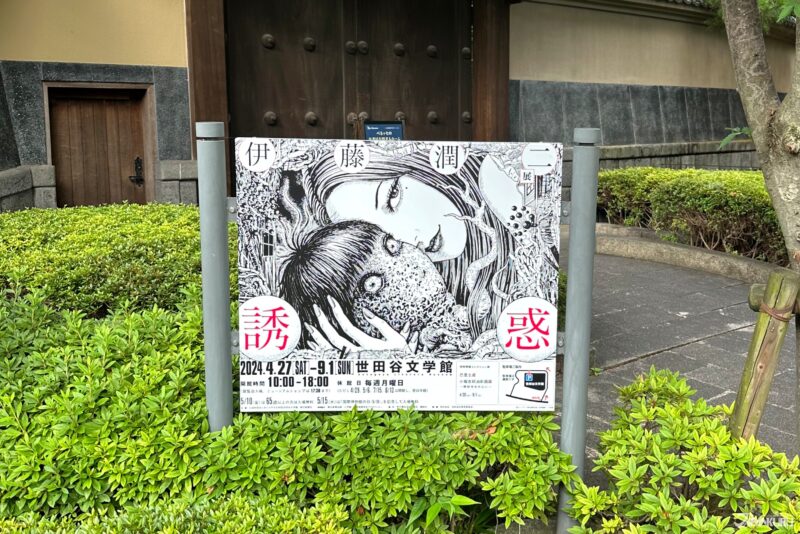
For fans of horror manga, Junji Ito is perhaps the biggest name of the modern era, with almost four full decades of work under his belt, and a bibliography beloved the world over. Junji Ito has produced multi-volume works of psychological horror manga, shorter stories that stretch the imagination (and all too often the body, in truly gruesome ways), and even comedic comics featuring the truest horror of all – cats so cute you just want to squeeze them and never let go. In case it wasn’t clear yet, some of us on the Japankuru team are fans of Ito and his unique body of work. So when we found out about the Junji Ito Exhibition: Enchantment on display in Tokyo this year at the Setagaya Literary Museum out in western Tokyo, we had to go take a look. This mid-career retrospective features a little of everything Ito has worked on over the years, with huge sections dedicated to longer works, and a generous smattering of shorter creations, including original panels from the publication process, along with more detailed illustrations and paintings used for cover art. Most of the major signs even has English translations, so you can keep up with the themes of each room. If you’ve ever thought that the tiny pages of pocket-sized manga volumes aren’t nearly enough to appreciate the ins and outs of Junji Ito’s hypnotic horror art, then you might want to see what this exhibition is all about.
Junji Ito Exhibition: Enchantment
Dates: April 27 ~ September 1, 2024
Exhibition Details (venue, tickets, etc)
Highlights of the Junji Ito Exhibition
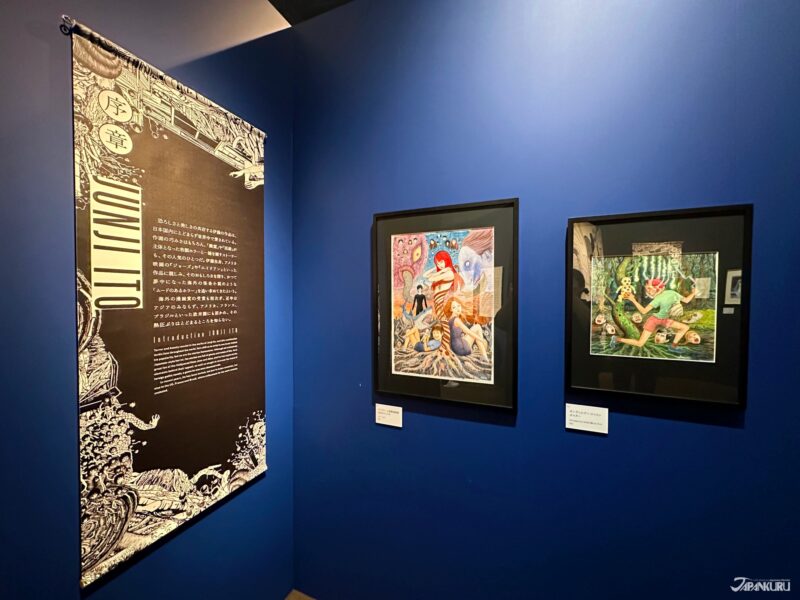
Never been to a manga exhibition before? Can’t quite imagine what this event is all about? Here are a few of our favorite parts of the Junji Ito Exhibition!
Junji Ito Comments Galore
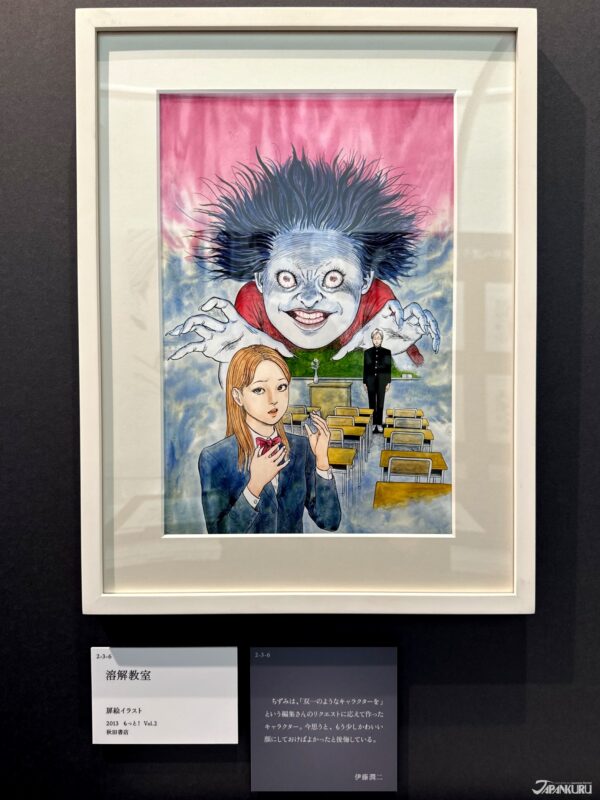
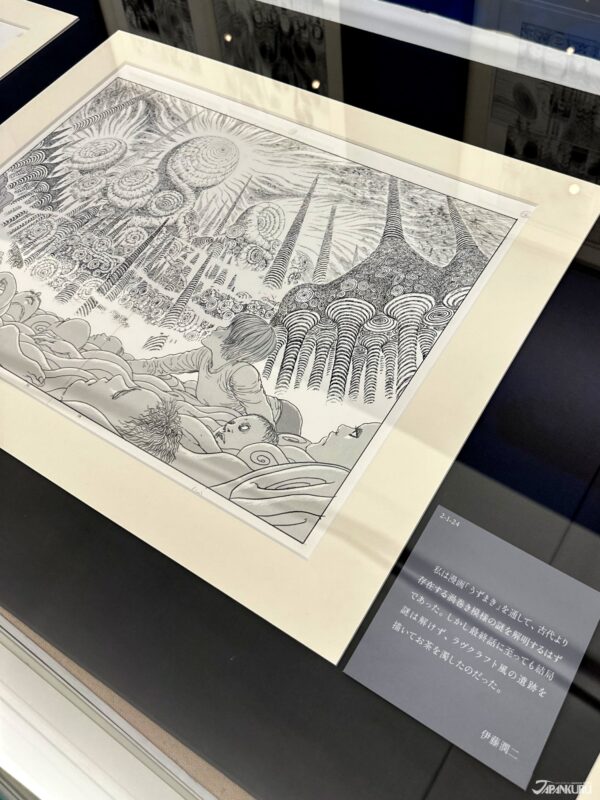
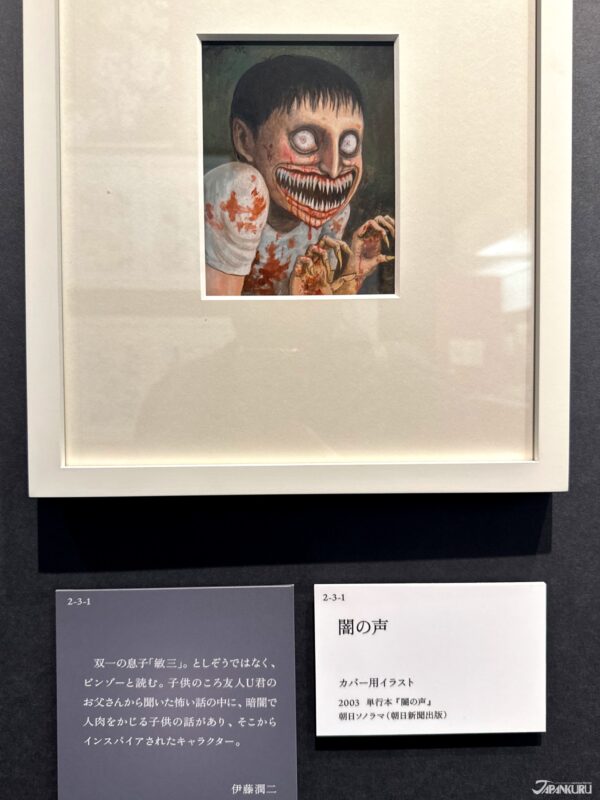
This event is all about the artist’s illustrations, but if that’s not enough to tempt you, then right from the start there’s something else at this exhibition – something you definitely won’t find anywhere else – that big Ito fans won’t want to miss: comments straight from the mouth (or probably keyboard) of Junji Ito himself. Under many of the displays at this exhibition you’ll find little grey comment placards with thoughts from the artist – bits of backstory, thoughts looking back on old work, some unexpected revelations. Some of these are hilarious, whether Ito’s trying to be funny or not. Under one detailed illustration he writes “This was a tough scene. I probably couldn’t draw it now.” Elsewhere, he writes that he was asked to draw a character who looked like a real person, and regretfully adds “I probably should have drawn her cuter.” Oops.
No worries if you can’t read Japanese. These little comments aren’t translated into English like the big signs are, but photography is allowed throughout the exhibition, so you won’t get any funny looks for pulling out your phone to translate for yourself!
A Whole Wall of Uzumaki
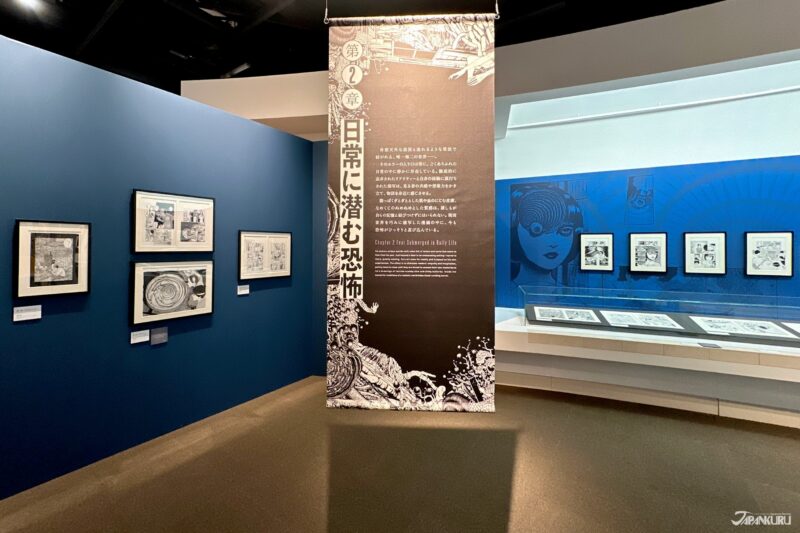
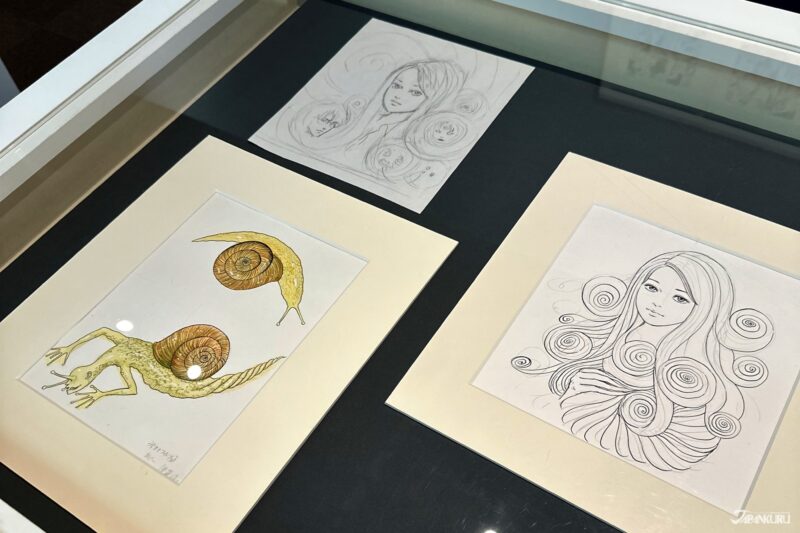
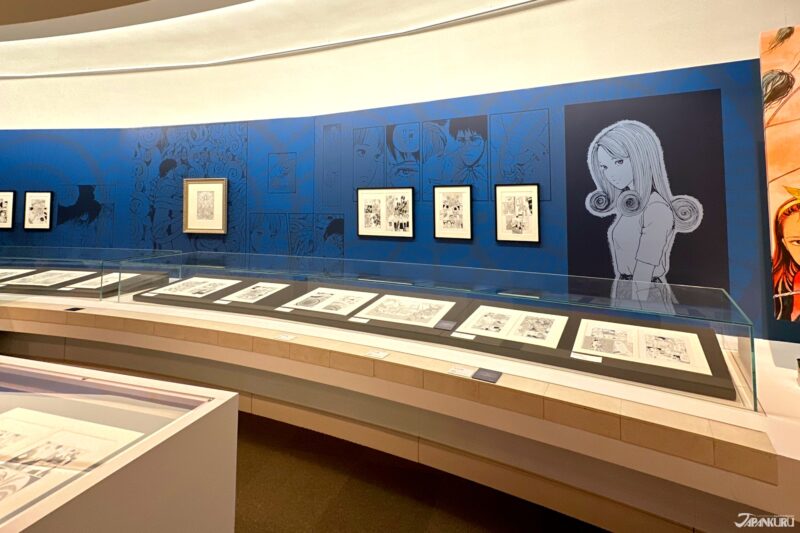
This Junji Ito exhibition starts with multiple rooms devoted to Tomie, which is one of Ito’s longer works, and probably his most famous series in Japan. Fortunately for the many foreign Junji Ito fans who found him through the sickly spirals of his other long series, however, there’s a good chunk of the exhibition dedicated to Uzumaki as well. Keep an eye out for horrifying little snail men on the walls, and if you’re a big fan of this work in particular, make sure you don’t miss the original rough sketches from the illustration process.
Manga Panels From Your Obscure Favorite
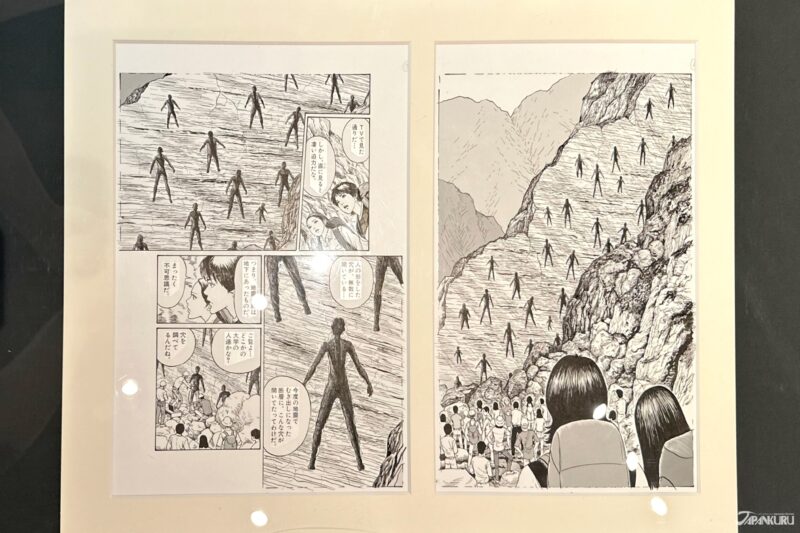
Over the course of almost 40 years making manga, Junji Ito has drawn a lot more one-volume or one-chapter works than he has long series, and overseas fans of the artist will certainly know the struggle of tracking down all of his work. Of course, that means that when you finally discover one of his many short stories (often in the form of a few fan-translated pages online, sigh), you really treasure such a rare find. When you find an original panel of that very same manga in an exhibition halfway across the globe from where you first read it on your old desktop computer back in middle school, the hit of nostalgia is indescribable. For this member of the Japankuru team, that was The Enigma of Amigara Fault. What will it be for you?
New Stories You’ll Want to Read Next
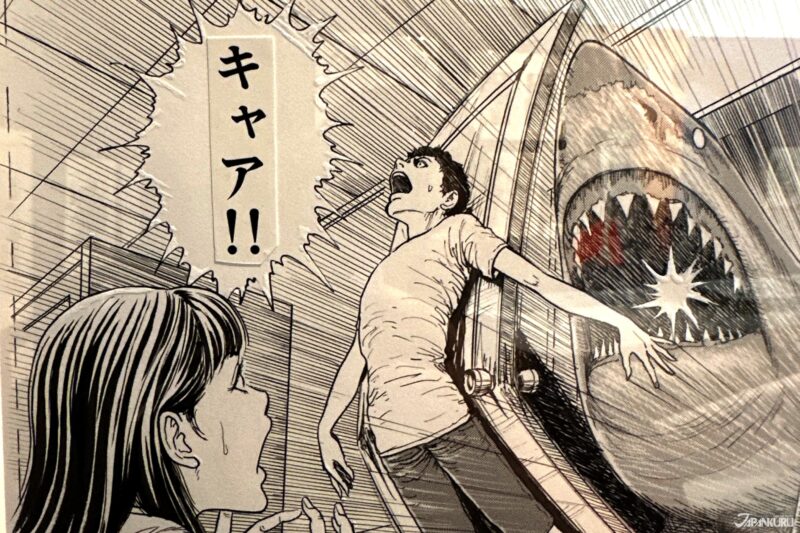
With only a small portion of Ito’s work translated and distributed overseas, it’s pretty inevitable for all but the most deeply committed fans to find a story or two at the exhibition that’s totally new (to you, at least). Fortunately, here in Tokyo, it’s probably the ideal situation for fans to find new Junji Ito works they might be interested in reading next. Not only do you get a little preview of what to expect (and maybe even a comment or two from Ito himself), but Tokyo is probably the best place to shop for obscure Junji Ito manga. First stop: this exhibition. Next stop: the nearest bookstore.
Junji Ito Experiments and Failures
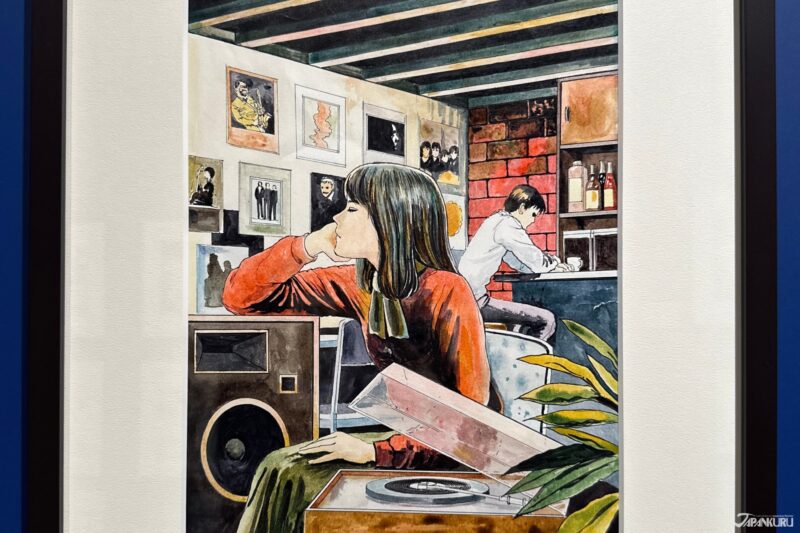
Junji Ito might make some otherworldly art, but in the end he’s all too human. From the comments that Ito has left under some of the work in the exhibition you can see him growing as an artist and exploring new methods, and also admitting when he thinks something didn’t really turn out like he wanted it. Did you know that in his cover art, Ito sometimes works with oil paints? (Not exactly the most common medium for manga art!) Look carefully at each new work of art to see where he tries new techniques! (There are definitely a few humble brags smattered throughout the comment placards. too.)
KITTIES 🐱
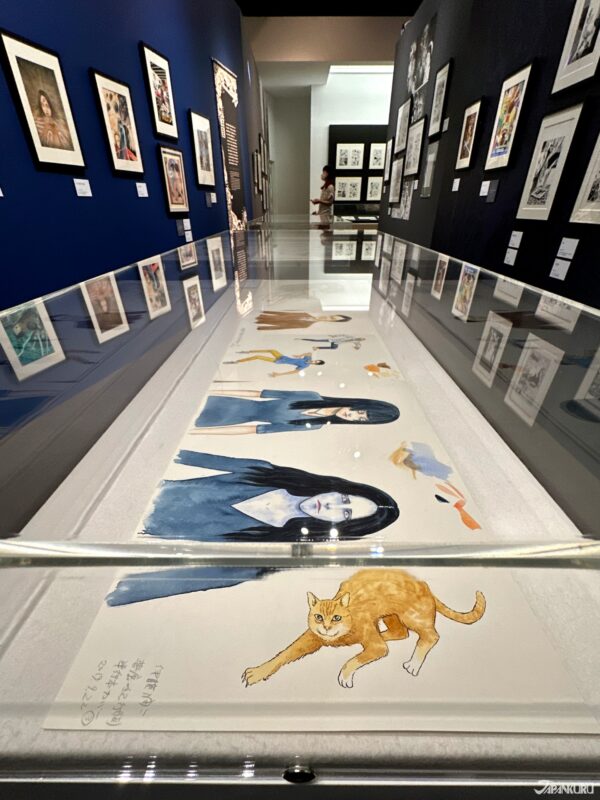
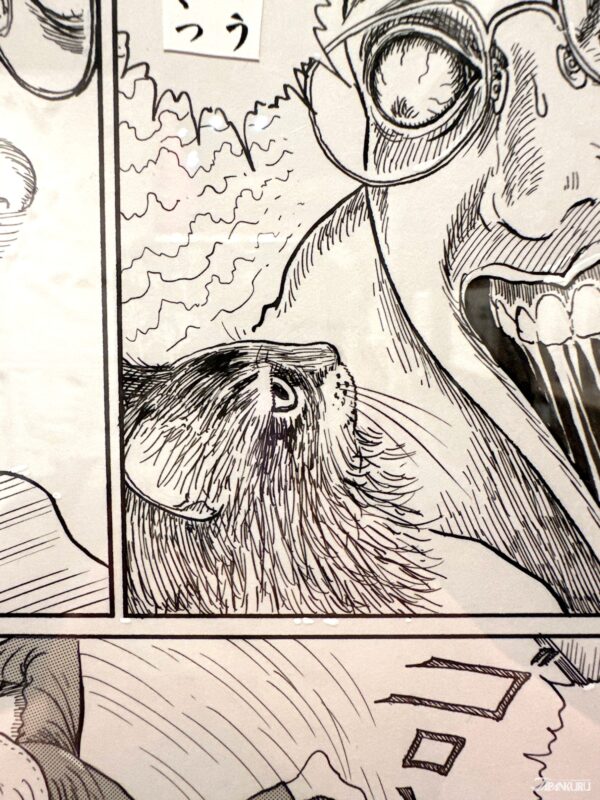
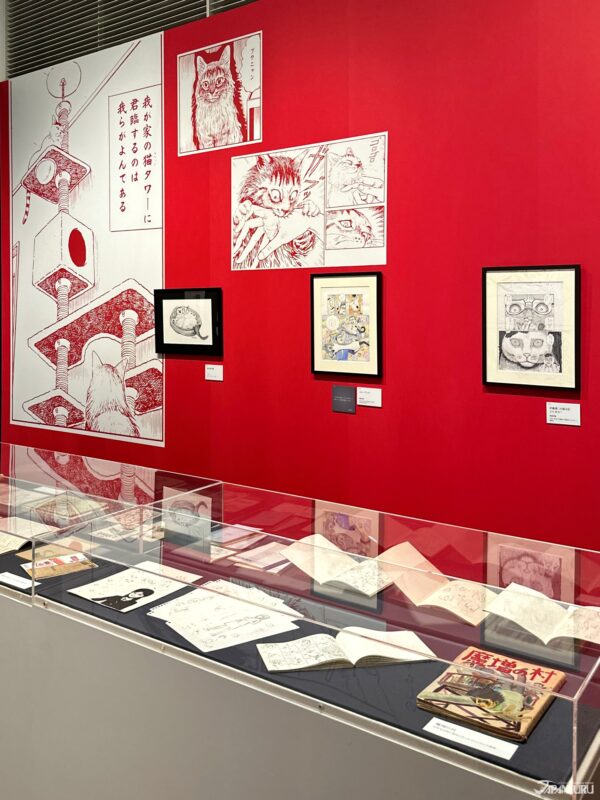
That’s right, cats. If you’ve ever read about the adventures of Yon and Mu (in Junji Ito’s Cat Diary) then you know that Ito is a huge fan of cats, and there’s a whole section of the exhibition devoted to his fantastic felines – plus other cute kitties scattered throughout the exhibition. If you know, you know. That is all.
3D & Interactive Exhibits
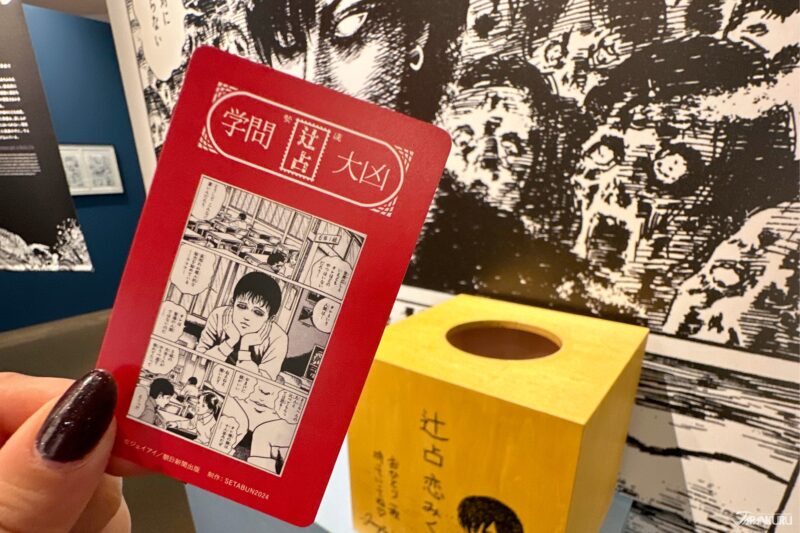
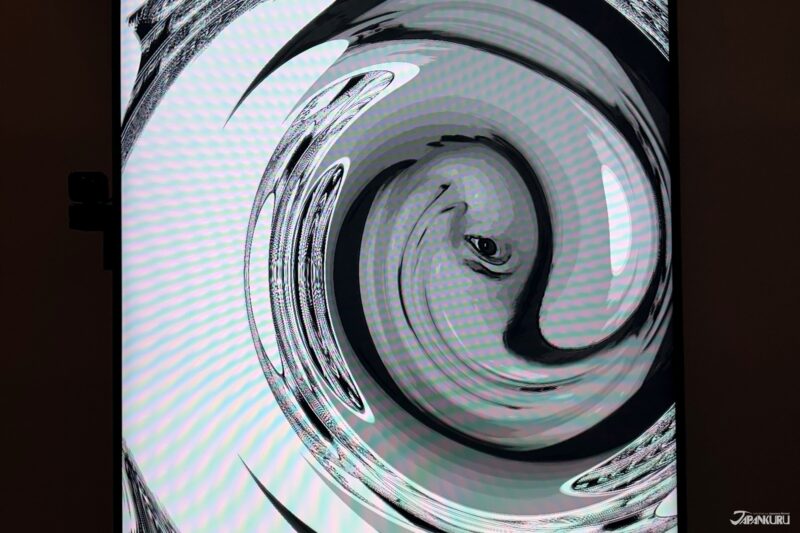
Towards the end of the Junji Ito Exhibition, just when your eyes are starting to strain at all the gruesome black-and-white line art, the exhibition treats fans to a little light-hearted entertainment. Make sure you peek through the cracks of that mysterious wooden door. Head into the booth to become one with Uzumaki. And get a good look at the tatami-mat room filled with Ito’s own treasures.
THE Destination for Junji Ito Fans in Tokyo
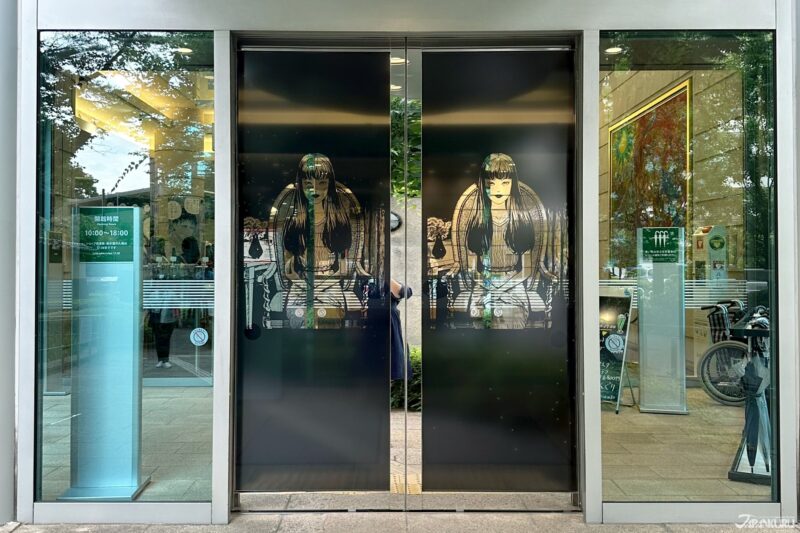
Junji Ito is a master of the gruesome, a disciple of the Lovecraftian tradition, and a composer of true terrors… but we know that the real horror would be missing this rare Junji Ito exhibition while it’s open in Tokyo this year! Whether you’ve read Uzumaki from start to finish or you’ve just caught a couple of his short stories here and there, fans of Junji Ito and his truly enchanting horror manga will want to get to Tokyo and add this exhibition to the itinerary before the Junji Ito Exhibition comes to an end!
For more info and updates from Japan, check Japankuru for new articles, and don’t forget to follow us on X (Twitter), Instagram, and Facebook!
Half a lifetime ago I came to Japan for a semester abroad... and I never left. I guess I really like the place! I spent my first few years in Japan living in the middle of nowhere, so I'd love to hear your Tokyo recommendations via Japankuru's social media accounts!
COMMENT
FEATURED MEDIA
VIEW MORE 
A New Tokyo Animal Destination: Relax & Learn About the World’s Animals in Japan
#pr #japankuru #anitouch #anitouchtokyodome #capybara #capybaracafe #animalcafe #tokyotrip #japantrip #카피바라 #애니터치 #아이와가볼만한곳 #도쿄여행 #가족여행 #東京旅遊 #東京親子景點 #日本動物互動體驗 #水豚泡澡 #東京巨蛋城 #เที่ยวญี่ปุ่น2025 #ที่เที่ยวครอบครัว #สวนสัตว์ในร่ม #TokyoDomeCity #anitouchtokyodome

Shohei Ohtani Collab Developed Products & Other Japanese Drugstore Recommendations From Kowa
#pr #japankuru
#kowa #syncronkowa #japanshopping #preworkout #postworkout #tokyoshopping #japantrip #일본쇼핑 #일본이온음료 #오타니 #오타니쇼헤이 #코와 #興和 #日本必買 #日本旅遊 #運動補充能量 #運動飲品 #ช้อปปิ้งญี่ปุ่น #เครื่องดื่มออกกำลังกาย #นักกีฬา #ผลิตภัณฑ์ญี่ปุ่น #อาหารเสริมญี่ปุ่น

도쿄 근교 당일치기 여행 추천! 작은 에도라 불리는 ‘가와고에’
세이부 ‘가와고에 패스(디지털)’ 하나면 편리하게 이동 + 가성비까지 완벽하게! 필름카메라 감성 가득한 레트로 거리 길거리 먹방부터 귀여움 끝판왕 핫플&포토 스폿까지 총집합!
Looking for day trips from Tokyo? Try Kawagoe, AKA Little Edo!
Use the SEIBU KAWAGOE PASS (Digital) for easy, affordable transportation!
Check out the historic streets of Kawagoe for some great street food and plenty of picturesque retro photo ops.
#pr #japankuru #도쿄근교여행 #가와고에 #가와고에패스 #세이부패스 #기모노체험 #가와고에여행 #도쿄여행코스 #도쿄근교당일치기 #세이부가와고에패스
#tokyotrip #kawagoe #tokyodaytrip #seibukawagoepass #kimono #japantrip

Hirakata Park, Osaka: Enjoy the Classic Japanese Theme Park Experience!
#pr #japankuru #hirakatapark #amusementpark #japantrip #osakatrip #familytrip #rollercoaster #retrôvibes #枚方公園 #大阪旅遊 #關西私房景點 #日本親子旅行 #日本遊樂園 #木造雲霄飛車 #히라카타파크 #สวนสนุกฮิราคาตะพาร์ค

🍵Love Matcha? Upgrade Your Matcha Experience With Tsujiri!
・160년 전통 일본 말차 브랜드 츠지리에서 말차 덕후들이 픽한 인기템만 골라봤어요
・抹茶控的天堂!甜點、餅乾、飲品一次滿足,連伴手禮都幫你列好清單了
・ส่องมัทฉะสุดฮิต พร้อมพาเที่ยวร้านดังในอุจิ เกียวโต
#pr #japankuru #matcha #matchalover #uji #kyoto #japantrip #ujimatcha #matchalatte #matchasweets #tsujiri #말차 #말차덕후 #츠지리 #교토여행 #말차라떼 #辻利抹茶 #抹茶控 #日本抹茶 #宇治 #宇治抹茶 #日本伴手禮 #抹茶拿鐵 #抹茶甜點 #มัทฉะ #ของฝากญี่ปุ่น #ชาเขียวญี่ปุ่น #ซึจิริ #เกียวโต

・What Is Nenaito? And How Does This Sleep Care Supplement Work?
・你的睡眠保健品——認識「睡眠茶氨酸錠」
・수면 케어 서플리먼트 ‘네나이토’란?
・ผลิตภัณฑ์เสริมอาหารดูแลการนอน “Nenaito(ネナイト)” คืออะไร?
#pr #japankuru #sleepcare #japanshopping #nenaito #sleepsupplement #asahi #睡眠茶氨酸錠 #睡眠保健 #朝日 #l茶胺酸 #日本藥妝 #日本必買 #일본쇼핑 #수면 #건강하자 #네나이토 #일본영양제 #อาหารเสริมญี่ปุ่น #ช้อปปิ้งญี่ปุ่น #ร้านขายยาญี่ปุ่น #ดูแลตัวเองก่อนนอน #อาซาฮิ

Japanese Drugstore Must-Buys! Essential Items from Hisamitsu® Pharmaceutical
#PR #japankuru #hisamitsu #salonpas #feitas #hisamitsupharmaceutical #japanshopping #tokyoshopping #traveltips #japanhaul #japantrip #japantravel

Whether you grew up with Dragon Ball or you just fell in love with Dragon Ball DAIMA, you'll like the newest JINS collab. Shop this limited-edition Dragon Ball accessory collection to find some of the best Dragon Ball merchandise in Japan!
>> Find out more at Japankuru.com! (link in bio)
#japankuru #dragonball #dragonballdaima #animecollab #japanshopping #jins #japaneseglasses #japantravel #animemerch #pr

This month, Japankuru teamed up with @official_korekoko to invite three influencers (originally from Thailand, China, and Taiwan) on a trip to Yokohama. Check out the article (in Chinese) on Japankuru.com for all of their travel tips and photography hints - and look forward to more cool collaborations coming soon!
【橫濱夜散策 x 教你怎麼拍出網美照 📸✨】
每次來日本玩,是不是都會先找旅日網紅的推薦清單?
這次,我們邀請擁有日本豐富旅遊經驗的🇹🇭泰國、🇨🇳中國、🇹🇼台灣網紅,帶你走進夜晚的橫濱!從玩樂路線到拍照技巧,教你怎麼拍出最美的夜景照。那些熟悉的景點,換個視角說不定會有新發現~快跟他們一起出發吧!
#japankuru #橫濱紅磚倉庫 #汽車道 #中華街 #yokohama #japankuru #橫濱紅磚倉庫 #汽車道 #中華街 #yokohama #yokohamaredbrickwarehouse #yokohamachinatown

If you’re a fan of Vivienne Westwood's Japanese designs, and you’re looking forward to shopping in Harajuku this summer, we’ve got important news for you. Vivienne Westwood RED LABEL Laforet Harajuku is now closed for renovations - but the grand reopening is scheduled for July!
>> Find out more at Japankuru.com! (link in bio)
#japankuru #viviennewestwood #harajuku #omotesando #viviennewestwoodredlabel #viviennewestwoodjapan #비비안웨스트우드 #오모테산도 #하라주쿠 #日本購物 #薇薇安魏斯伍德 #日本時尚 #原宿 #表參道 #japantrip #japanshopping #pr

Ready to see TeamLab in Kyoto!? At TeamLab Biovortex Kyoto, the collective is taking their acclaimed immersive art and bringing it to Japan's ancient capital. We can't wait to see it for ourselves this autumn!
>> Find out more at Japankuru.com! (link in bio)
#japankuru #teamlab #teamlabbiovortex #kyoto #kyototrip #japantravel #artnews
Photos courtesy of teamLab, Exhibition view of teamLab Biovortex Kyoto, 2025, Kyoto ® teamLab, courtesy Pace Gallery

Japanese Makeup Shopping • A Trip to Kamakura & Enoshima With Canmake’s Cool-Toned Summer Makeup
#pr #canmake #enoshima #enoden #에노시마 #캔메이크 #japanesemakeup #japanesecosmetics

⚔️The Robot Restaurant is gone, but the Samurai Restaurant is here to take its place. Check it out, and don't forget your coupon!
🍣신주쿠의 명소 로봇 레스토랑이 사무라이 레스토랑으로 부활! 절찬 쿠폰 발급중
💃18歲以上才能入場的歌舞秀,和你想的不一樣!拿好優惠券去看看~
#tokyo #shinjuku #samurairestaurant #robotrestaurant #tokyotrip #도쿄여행 #신주쿠 #사무라이레스토랑 #이색체험 #할인이벤트 #歌舞伎町 #東京景點 #武士餐廳 #日本表演 #日本文化體驗 #japankuru #japantrip #japantravel #japanlovers #japan_of_insta

Japanese appliance & electronics shopping with our KOJIMA x BicCamera coupon!
用JAPANKURU的KOJIMA x BicCamera優惠券買這些正好❤️
코지마 x 빅 카메라 쿠폰으로 일본 가전 제품 쇼핑하기
#pr #japankuru #japanshopping #kojima #biccamera #japaneseskincare #yaman #dji #osmopocket3 #skincaredevice #日本購物 #美容儀 #相機 #雅萌 #日本家電 #일본여행 #면세 #여행꿀팁 #일본쇼핑리스트 #쿠폰 #일본쇼핑 #일본브랜드 #할인 #코지마 #빅카메라 #japankurucoupon
















































